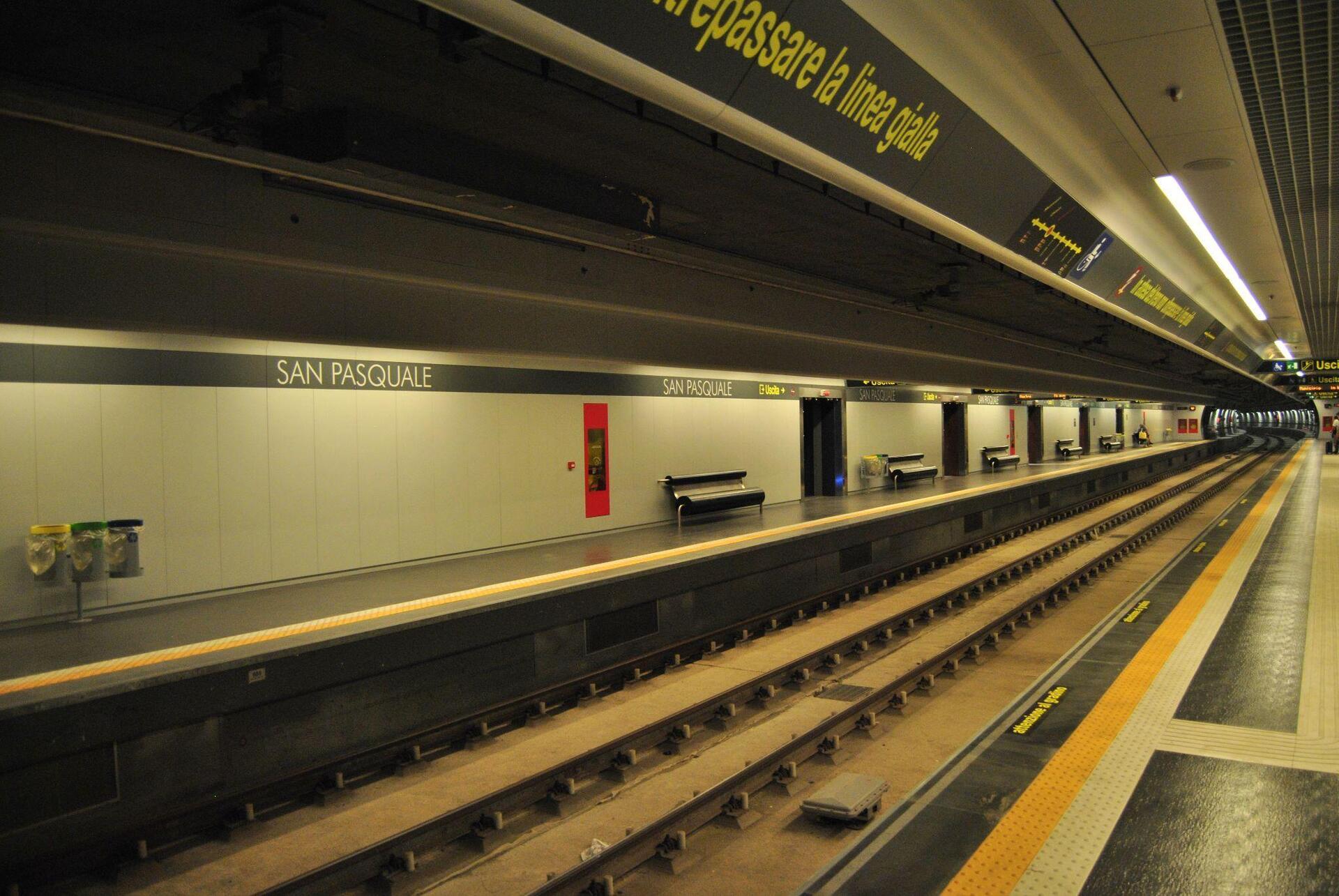Discover 5 Sustainable Infrastructures that Save Entire Cities – We Build Value

Report on Sustainable Mobility Infrastructure and its Contribution to the Sustainable Development Goals
The integration of sustainability is a fundamental prerequisite for all innovations within the transportation infrastructure sector. The development of responsible and sustainable transport systems is a critical component in achieving the United Nations’ Sustainable Development Goals (SDGs). Projects ranging from metro systems to advanced highway construction demonstrate a global transformation toward mobility solutions that support these goals, particularly those focused on infrastructure, sustainable cities, and climate action.
Case Studies in Sustainable Transportation Infrastructure
-
Naples, Italy: San Pasquale Metro Station
The San Pasquale metro station in Naples is a key component of a comprehensive urban regeneration initiative. The project enhances integrated and sustainable mobility by improving public transportation connectivity, thereby reducing reliance on private vehicles. This development contributes directly to making the urban environment more resilient and sustainable.
- SDG 9 (Industry, Innovation, and Infrastructure): The station represents a development of quality, reliable, and resilient infrastructure to support economic development and human well-being.
- SDG 11 (Sustainable Cities and Communities): It provides access to safe, affordable, and sustainable transport systems for all, improves urban planning, and safeguards cultural heritage through the preservation of nearby archaeological sites.
-
Copenhagen, Denmark: Cityringen Metro Line
Copenhagen’s Cityringen is a fully automated, 24/7 underground metro loop designed to serve up to 72 million passengers annually. This infrastructure is central to the city’s strategic goal of becoming the world’s first carbon-neutral capital, showcasing a significant commitment to climate action through public transport.
- SDG 11 (Sustainable Cities and Communities): The project significantly expands the city’s sustainable transport network, reducing road congestion and associated air pollution.
- SDG 13 (Climate Action): By providing a large-scale alternative to fossil-fuel-powered transport, the Cityringen is a direct measure to mitigate climate change and reduce the city’s carbon footprint.
-
Paris, France: Grand Paris Express
The Grand Paris Express is a large-scale metro network expansion of approximately 200 km, designed to connect municipalities across the Paris metropolitan area. The primary objective is to improve urban mobility and drastically reduce road traffic, which will lead to a significant decrease in CO₂ emissions, aligning with Paris’s goal of becoming a zero-emission city by 2050.
- SDG 9 (Industry, Innovation, and Infrastructure): This project develops regional infrastructure to support economic activity and improve connectivity for surrounding communities.
- SDG 11 (Sustainable Cities and Communities): It aims to provide universal access to a safe, inclusive, and sustainable transport system.
- SDG 13 (Climate Action): The project is a core part of the region’s climate strategy, designed to achieve substantial reductions in greenhouse gas emissions from the transport sector.
-
Sweden: E20 Electrified Highway
In 2025, Sweden is set to launch the world’s first electrified highway, featuring an Electric Road System (ERS) that allows electric vehicles to charge while in motion. This innovation addresses key barriers to EV adoption, such as range anxiety and charging time, and establishes a new paradigm for sustainable road infrastructure.
- SDG 7 (Affordable and Clean Energy): The project promotes clean energy use in the transport sector.
- SDG 9 (Industry, Innovation, and Infrastructure): It represents a significant technological innovation in sustainable infrastructure, with the potential to be replicated globally.
- SDG 13 (Climate Action): By facilitating the transition to electric vehicles, the ERS directly contributes to reducing emissions from road transport.
-
Barcelona, Spain: Integrated Urban Mobility Strategy
Barcelona has implemented a multifaceted strategy for sustainable urban transport that combines an efficient, integrated public transportation network with the significant expansion of pedestrian-only zones. This approach encourages the use of public transport and active mobility (walking), thereby reducing car traffic, emissions, and noise pollution.
- SDG 3 (Good Health and Well-being): The reduction in air and noise pollution from decreased vehicle traffic contributes to a healthier urban environment.
- SDG 11 (Sustainable Cities and Communities): The city’s model exemplifies sustainable urban planning by creating safe, inclusive public spaces and promoting efficient public transport systems.
- SDG 13 (Climate Action): The comprehensive strategy actively reduces the city’s carbon footprint by discouraging private car use in favor of more sustainable alternatives.
Analysis of Sustainable Development Goals in the Article
1. Which SDGs are addressed or connected to the issues highlighted in the article?
- SDG 9: Industry, Innovation and Infrastructure: The article focuses on the development of innovative and sustainable transportation infrastructure, such as new metro lines in Naples, Copenhagen, and Paris, and the world’s first electrified highway in Sweden. These projects represent the creation of resilient, sustainable, and quality infrastructure.
- SDG 11: Sustainable Cities and Communities: The core theme is improving urban mobility and making cities more sustainable. The projects discussed aim to provide access to safe, affordable, and sustainable public transport systems, reduce traffic congestion, and support urban regeneration, as seen in Naples and Barcelona.
- SDG 13: Climate Action: Several projects are explicitly linked to climate goals. The Copenhagen metro is part of a strategy to become a carbon-neutral capital, and the Grand Paris Express aims to cut CO₂ emissions, directly contributing to climate change mitigation efforts.
2. What specific targets under those SDGs can be identified based on the article’s content?
- Target 9.1: Develop quality, reliable, sustainable and resilient infrastructure… to support economic development and human well-being: The article describes the construction of modern, large-scale infrastructure projects like the Copenhagen Cityringen (15.5 km tunnels, 17 stations) and the Grand Paris Express (200 km network), which are designed to be sustainable and improve the well-being of urban populations.
- Target 11.2: By 2030, provide access to safe, affordable, accessible and sustainable transport systems for all: All the projects mentioned, from the metro systems in Naples, Copenhagen, and Paris to the integrated public transport network in Barcelona, are designed to improve and expand access to public transportation, encouraging a shift away from private vehicles. The article states the Paris project aims to “remove thousands of vehicles from the roads daily.”
- Target 11.3: By 2030, enhance inclusive and sustainable urbanization and capacity for… integrated human settlement planning: The Naples metro station is part of a “broader urban regeneration project” that includes creating a pedestrian square. Similarly, Barcelona’s strategy involves the “expansion of pedestrian areas,” reflecting efforts towards sustainable urban planning.
- Target 11.6: By 2030, reduce the adverse per capita environmental impact of cities: The article explicitly mentions that the projects in Copenhagen and Paris are intended to help the cities become “carbon-neutral” and “zero-emission,” respectively, by cutting CO₂ emissions and reducing car traffic.
3. Are there any indicators mentioned or implied in the article that can be used to measure progress towards the identified targets?
- For Target 9.1:
- Infrastructure dimensions: The article provides specific measurements for new infrastructure, such as the 15.5 km length of the Copenhagen metro tunnels and the 200 km length of the Grand Paris Express network.
- Passenger capacity: The Copenhagen Cityringen is designed to carry “up to 72 million passengers annually,” which serves as a direct indicator of the infrastructure’s capacity and scale.
- For Target 11.2:
- Reduction in private vehicle use: The goal of the Grand Paris Express to “remove thousands of vehicles from the roads daily” is a clear, albeit not yet quantified, indicator of progress towards sustainable transport systems.
- Accessibility of public transport: The Copenhagen metro’s 24/7 operation is an indicator of improved accessibility and convenience for users.
- For Target 11.6 / SDG 13:
- Emission reduction goals: The stated ambitions for Copenhagen to become the “world’s first carbon-neutral capital” and for Paris to become a “zero-emission capital by 2050” are high-level indicators.
- Specific emission cuts: The objective to “cut CO₂ emissions” through projects like the Grand Paris Express is a direct indicator of reducing the environmental impact of the city.
4. Summary Table of SDGs, Targets, and Indicators
| SDGs | Targets | Indicators |
|---|---|---|
| SDG 9: Industry, Innovation and Infrastructure | 9.1: Develop quality, reliable, sustainable and resilient infrastructure. |
|
| SDG 11: Sustainable Cities and Communities |
11.2: Provide access to safe, affordable, accessible and sustainable transport systems for all.
11.3: Enhance inclusive and sustainable urbanization. 11.6: Reduce the adverse per capita environmental impact of cities. |
|
| SDG 13: Climate Action | 13.2: Integrate climate change measures into national policies, strategies and planning. |
|
Source: webuildvalue.com
What is Your Reaction?
 Like
0
Like
0
 Dislike
0
Dislike
0
 Love
0
Love
0
 Funny
0
Funny
0
 Angry
0
Angry
0
 Sad
0
Sad
0
 Wow
0
Wow
0
















































/environment-climate-change-and-health-(ech)/water-sanitation-hygiene-and-health-(wsh)/landfill-tuvalu-36092.tmb-1200v.jpg?sfvrsn=5c21fe40_1#)

.jpg.webp?itok=0ZsAnae9#)
























